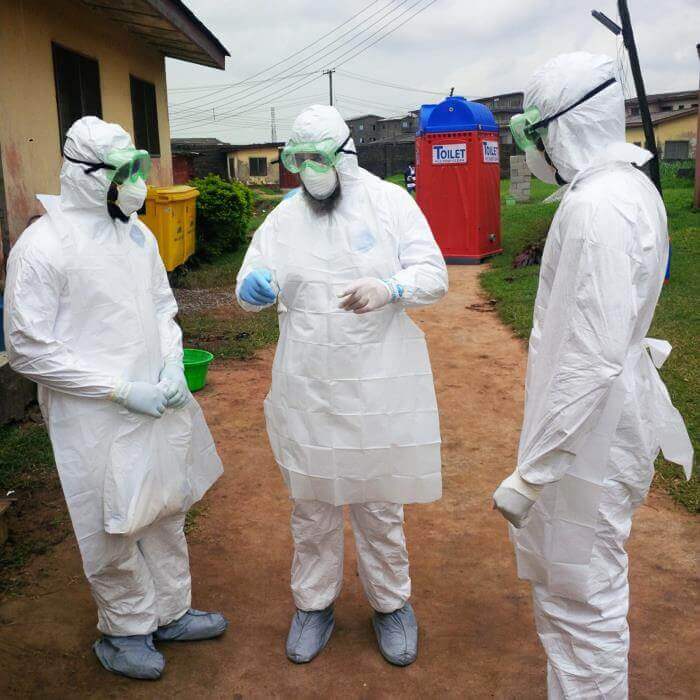Jenny HowellGHTC
Jenny Howell is a senior policy and advocacy associate at GHTC, leading the coalition's US Congressional advocacy.

Working over a rare weekend session and racing against the clock to keep the government open, Congress finally came to an agreement on a year-long spending plan to fund the government through September 30, 2015 (with the exception of the Department of Homeland Security, which only goes through February 27). The package sustains budgets for global health research and development (R&D) and includes policies which we hope will improve coordination across the government to ultimately strengthen the impact of US investments.
State, foreign operations, and related programs (SFOPS)
For the most part, global health programs funded through the State Department and the US Agency for International Development (USAID) were essentially flat funded. Total fiscal year (FY) 2015 funding for USAID and State was US$8.44 billion, slightly above FY2014’s $8.454 billion. While most programs remained the same, Gavi, the vaccine alliance received a boost of $25 million, and malaria was increased by $4.5 million. While there was a $300 million decline in US contributions to the Global Fund to Fight AIDS, Tuberculosis and Malaria, bilateral funding for HIV and AIDS received a $300 million increase. One thing we were watching closely was how the bill would handle the White House’s proposed cut to tuberculosis funding—thankfully appropriators rejected the proposed cut and went with the higher House number of $236 million—which was the same as last year.
In addition to tracking final funding levels, we were anxiously watching to see how appropriators would handle report language. The SFOPS explanatory statement noted that unless specifically stated, all report language put in the FY2015 House and Senate report still stands. As noted in our previous blog on report language, we are thrilled to see the Committee direct USAID to coordinate across the government with other agencies involved with global health R&D to ensure efforts are efficient and coordinated.
Health and human services (HHS)

At just over $30 billion, funding for the US National Institutes of Health (NIH) increased by $150 million in base funding from 2014, but still came in below both the White House and Senate request. Within the NIH, the National Institute of Allergy and Infectious Diseases, the Fogarty International Center, and the National Center for Accelerating Translational Science (NCATS) were essentially flat funded with NCATS receiving a slight increase of $2 million. Overall funding for global health at the US Centers for Disease Control and Prevention (CDC) remained the same. Within the CDC’s global health programs, the global immunization program overall, and specifically polio, saw slight increases of 3.8 percent and 5.8 percent respectively. Finally, the US Food and Drug Administration (FDA) was funded at $4.43 billion, which reflected the higher Senate request and was just over a 2 percent increase from FY2014 (note this number includes user fees).
We were pleased to see appropriators include strong HHS report language around the need for coordination among agencies. Included in the joint explanatory statement was a request for a global health strategy that would direct the CDC, FDA, and NIH to “jointly develop, coordinate, plan, and prioritize global health research activities.”
Defense
The peer reviewed medical research program at the US Department of Defense (DoD)received funding at $247.5 million—$47.5 million more than FY 14 levels. This program funds important research for dengue and malaria. We were pleased to see that the final omnibus also includes language submitted by the GHTC affirming the DoD contributions to global health R&D, and asking the agency to improve upon current reporting on its work in infectious disease research. The report language also noted the importance of DoD’s research around malaria, dengue and Chikungunya and encouraged continued research and partnerships with other federal agencies and non-profit organizations.
Ebola emergency funding

Included in the $1.1 trillion omnibus agreement was $5.4 billion in additional funding for Ebola response at home and abroad (as a reminder, the president requested $6.2 billion). Out of that $5.4 billion, $2.5 billion is for the Department of State, $2.7 billion for HHS, which includes $1.78 billion for the CDC’s work in the US and around the world (including $597 million for the CDC to set up and strengthen National Public Health Institutes), $238 million for NIAID’s research (including its work on Ebola vaccines), and $157 million for research through the Biomedical Advanced Research and Development Authority (BARDA) at HHS. This funding for Ebola is on top of previously noted funding levels. We’re glad to see that appropriators heard our call that funds to meet the Ebola crisis must be made in addition to other global health funds and not at the expense of other spending.
While we would have liked to see higher increases overall, we’re glad funding for global health R&D has been sustained and that important policy shifts are taking place to ensure increased efficiency and coordination, and ultimately making sure that we are seeing maximum bang for our buck.